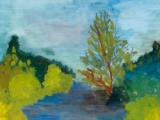| he project/Projekt Themes/Teme
The place we live
This is our nature
This is our culture
Sustainable development
Tools/Orodja
Curiosities/Zanimivosti
minister Kopač
art winners
Students/učenci
Teachers/Učitelji
Eno
song/Eno pesem
 back back
|

Deciduous trees |
| Beech
tree Oak tree
Lime tree
|
More than 5000
years ago, huge surfaces in Europe and east of North America were covered with deciduous
trees. Since then most of the forests were cleared and changed in fields. They are called deciduous trees, because most of this trees has
broad, (flat) leaves, which are different than needles or scales of coniferous tree. All
deciduous trees blossom, and after the pollination, from blossom develop seeds closed in
hard nut or fleshy fruit. Most of deciduous trees throw off leaves in autumn. |
Beech tree
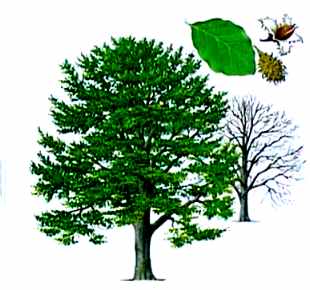
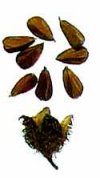
|
Beech tree is our most important deciduous tree. It grows in
moisture climate and it likes limy clayey ground. Beech grows mostly in forests, but
people also plant beech in parks, especially its decorated variety, like red-leaf beech.
There have been discovered 300 years old samples of beech; otherwise it grows for about
150 years. Its wood is hard and heavy. In Slovenia we say that the person who is clumsy or
boorish is beechen person.
Appearance: 40 m high tree, treetop is dense branchy. Large
beeches, which grow on open area, they have branches in lower parts but in dense forests
their branches grow higher on the trunk.
Bark: is slender and smooth, silver gray, it cracks and darkens
with years
Leaves: are 6-8 cm long, shiny and smoothly, they are bright
green, silky and fold first, they are dark green thereafter, beech leaves are yellow red
in autumn, when they dry up they partly stay on tree till spring
Use: for furniture, toys, packing material, different kinds of
lathed products, for bounded slab, for cross-ties, for plywood, for charcoal, for chip
boards, heating, pulpwood…

|
Oak tree
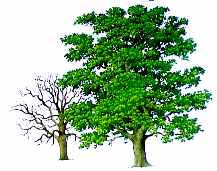
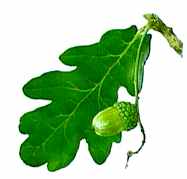 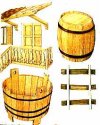
|
We know many kinds of oak trees (like summer oak, winter tree,
bitter oak, downy oak, red- decorative oak…) only summer and winter oak are important
for wood industry. Both of them are spread all Europe.
Appearance: 20-40 m high trees. Oak trees that grow in forests
have straight trunk, the one that grows outside forests in an open area have broad treetop
and small, stocky trunk, which are less useful for remodeling. Summer oak tree has thin to
top stretch trunk, winter oak tree trunk blows away in vigor branches.
Bark: is smooth first, later it thickens and has deep gaps, it is
dark gray
Leaves: are feathery and look like tatter, they start to grow in
the middle of May
Use: for internally furniture, different kinds of lathed and
carving products, as construction wood, for parquet and stairs, for making barrels, for
cross-ties…
|
Lime tree
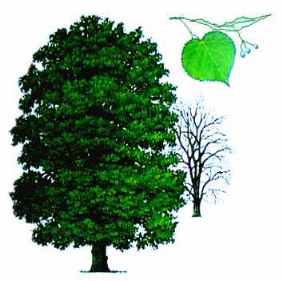
|
Lime tree is a symbol of Slovenian
nation. Our ancestors have planted it in the middle of their colonies - villages. The
tradition of a village lime tree was kept from generation to generation. In the shadow of
this tree, people were holding a meeting, deciding of an important matter and they were
also dancing. We suppose that some of the village lime trees are 1000 years old, their
mighty trunks measure about 4-5 m. In Ljubljana in front of the assembly there is a lime
tree planted as a symbol of Slovenian independence.
Appearance: 40 m high tree with equably oval treetop
Bark: is dark gray with small, verticality furrows
Leaves: are 15 cm long, hearted
Use: in joinery, wood turning and carving trade, for different
kinds of models, packing material, matches, pencils, toys and drawing boards, for bounded
slab … |
|
